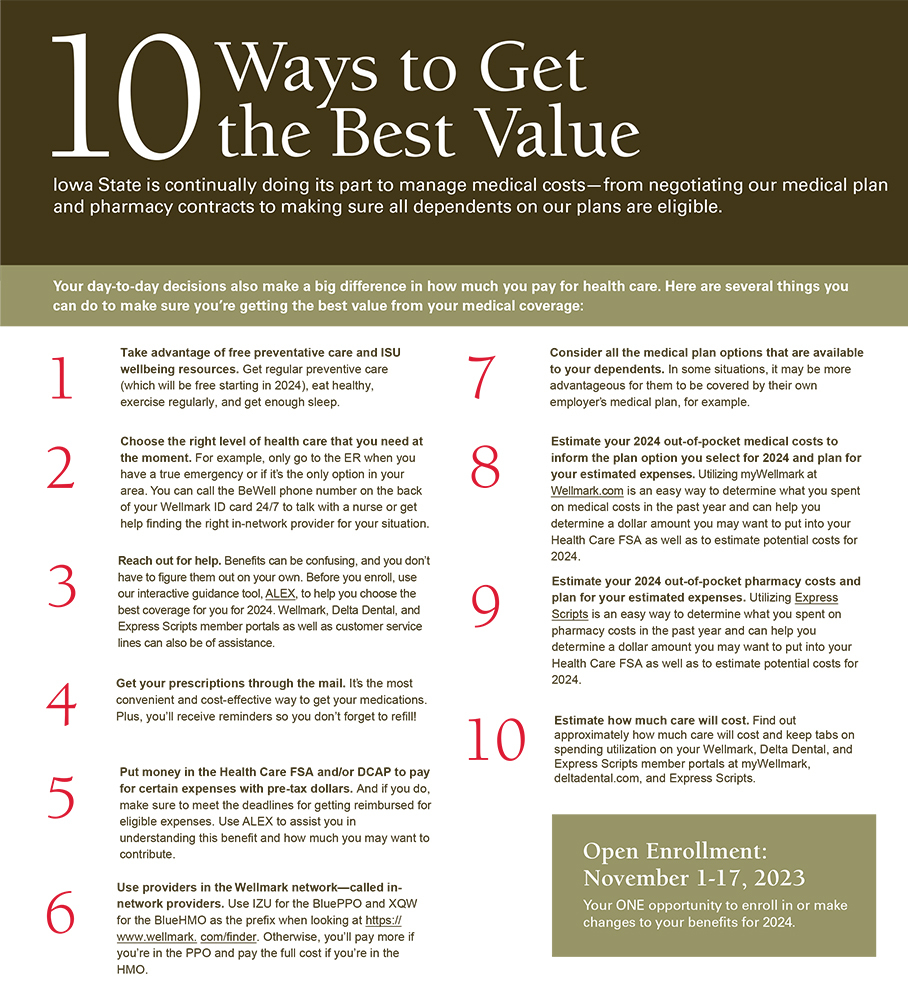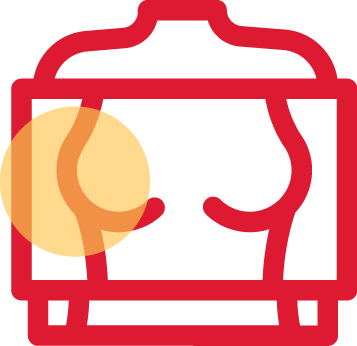Iowa State awards posthumous degree to Jack Trice

George Trice (center) accepts Jack Trice's posthumous degree in animal husbandry from President Wendy Wintersteen and ISU Alumni Association president and CEO Jeff Johnson, an emotional highlight of the closing ceremony Sunday afternoon. Also present were senior vice president for student affairs Toyia Younger (far left) and 1975-76 student body president Jill Wagner (far right), who was active in one of the early drives to name the football stadium for Jack Trice. Photos by Christopher Gannon.
An estimated 800 people gathered Sunday on central campus to close the centennial commemoration of student athlete Jack Trice's death on Oct. 8, 1923, from injuries during a football game. While speakers acknowledged some progress over 100 years -- senior vice president for student affairs Toyia Younger noted she is the first Black woman (third Black person) to serve in the post -- they also challenged the audience to not forget the courage and selflessness that defined Trice's life.
Watch it again
A recording of the closing ceremony is posted online.
After reading aloud the letter Trice penned in a Minneapolis hotel the night before the fateful game, President Wendy Wintersteen noted that "within each of us is the ability to do 'big things,'" as Trice pledged in his letter.
"He was a student athlete, but he was here to do more than that. His goal after college was to go to the South and teach share croppers how to earn a living to take care of their families," said alumnus George Trice, a cousin to Jack. "We have to carry Jack into our experiences every day and bring his future with us."
Younger, who for the last 18 months has chaired the commemoration committee, said lifting up the Trice story has been a highlight of her career.
"All one has to do is read Jack's now famous letter to know that he understood the awesome weight and responsibility that he bore on his shoulders," she said. "We must all find the courage to stand on his shoulders and bear a similar responsibility."
She challenged attendees to commit to "the necessary work to make this the most inclusive and student-centric leading research university," to assure that all students feel welcomed and see themselves as members of the Cyclone community.
A highlight of the ceremony was the presentation of an Iowa State degree in animal husbandry for John "Jack" Trice to his family. Trice had completed 22 credits toward a bachelor's degree before he died.
The ceremony was held in the same location as the college memorial service for Trice in 1923.
Action grants honor Trice legacy
Younger said one of the ways the committee chose to continue the conversation about Trice is to provide funds to student groups planning events that "represent all the things Jack Trice stood for: courage, strength and making the world a better place." The "I Will" Action Grants provide up to $3,000 to support an event, initiative or program that aligns with Trice's legacy. Five proposals received funding in an initial application window this fall, and there will be a second application round this academic year. Here's a bit about the five recipients, who were recognized during the ceremony, and their projects:
- The SHOP food pantry. Partner with ethnic grocery stores to purchase additional culturally relevant foods each month for the shelves of the pantry, located in Beyer Hall.
- Delta Sigma Theta Sorority, Inc. The Phi chapter, a joint charter between Iowa State and Drake University, will hold a Sisterhood Summit Luncheon in late April as part of its centennial celebration. The intent is to bring together undergraduate and alumni members to enhance mentorship opportunities and strengthen community.
- ISU French Club. Host its first ever “Francophone Cultural Night” in the spring, which will celebrate cultures of the French-speaking regions of Africa, Canada and Europe.
- International Association of Students in Agriculture and Related Sciences, ISU chapter. Its annual November dinner will be expanded to include members of international student organizations and build community among all students and faculty, not only those with an agriculture interest.
- Athletic training graduate program. Partner with the University of Iowa athletic training graduate program on a book discussion about Jamie Schultz's "Moments of Impact: Injury, Racialized Memory, and Reconciliation of College Football."

Members of the Alpha Phi Alpha fraternity, Jack Trice's fraternity, performed a hymn and prayer in their tribute to their brother. Watching, in coordinated shirts, were the members of the Cyclone football team, fresh off a victory over TCU Saturday night in the Jack Trice Legacy Game.

Emotions ran high during the closing ceremony. ISU Alumni Association president and CEO Jeff Johnson (center) supports George Trice and 1975-76 student body president and Trice advocate Jill Wagner following the presentation of Jack Trice's posthumous degree from Iowa State.

Gerry Vaughn, senior linebacker and second recipient of the Jack Trice Endowed Scholarship on the Cyclone football team, spoke during the closing ceremony Sunday afternoon. Head coach Matt Campbell selects a scholarship recipient who demonstrates courage, character, selflessness, leadership, dedication to the community and academic and athletic achievements, all traits of Trice.
Image on the front page: The Iowa State Jubilee Gospel Choir opened the ceremony with a performance of the Black national anthem, "Lift Every Voice and Sing."
Benefits 101: The basics to help you understand and take charge of your health care

Source: University Human Resources. Larger image.
To help employees who may be unfamiliar with the new elements of ISU's medical insurance plans, two resources compliment other resources available and help employees navigate the changes to the 2024 plans and better understand the terminology involved in the plans.
Both are available on the university human resources (UHR) benefits website:
- A Medical Insurance Glossary includes definitions of a dozen key terms related to ISU's medical insurance plan, including terms like copay, coinsurance, out-of-pocket maximum and premium.
- A five-minute video, Understanding Your Medical Coverage Costs, explains basic terminology and uses example scenarios and explains how these elements interact and apply to care received.
Use the myWellmark member portal
The myWellmark member portal is a resource that can help you stay on top of your ISU plan benefits and usage. The site allows you to easily manage your health, your health plan and your health care costs -- all in one place. This secure member website is available 24/7 and lets you track your expenses, learn more about wellness and get the tools to help you reach your health goals. Plus, you get access to Wellmark's secure message center and digital notification preferences for important information about your health plan.
The site is a convenient, one-stop destination where you can do everything such as check your claims, find providers, see if a procedure is covered and check the prices of your prescriptions. You'll also find answers to many commonly asked questions, including:
- How do I find my benefits plan information?
- Where do I find my claims information?
- Where do I find how much of my deductible I have met for the year?
- How do I print my health plan ID card or request a replacement card?
If you have not already registered for the portal, you can do so by visiting myWellmark registration. You can also download the myWellmark app on the App Store or Google Play.
Explanation of Benefits: An explanation
An Explanation of Benefits (EOB) is a recap of what your insurance has paid. You will receive an EOB after you receive service, but it is important to note that this is not a bill. It is simply a summary of the services provided, along with a detailed breakdown of who is responsible for which portion of the costs, as detailed in the linked sample. If your EOB shows that you are responsible for some of the cost, your provider will bill you separately. When you receive your EOB, it's important to review it, to make sure you're getting the most value out of your health care spending.
These three tips could help reduce the amount you pay out-of-pocket:
- Select an in-network provider. Use the Find a Doctor or Hospital tool on Wellmark.com to find an in-network provider, so you can get the best savings from your health plan.
- Compare charges. If you receive a bill from your provider, compare changes on your EOB to charges listed on the provider bill to confirm that services and charges listed are correct.
- Register for myWellmark. Review your health plan information online so you are familiar with your plan. The myWellmark website is your personalized site to make the most out of your coverage.
Questions?
Employees with questions on these or other benefits-related items are encouraged to call the UHR service center, 515-294-4800, email the benefits team at benefits@iastate.edu or schedule a virtual or in-person meeting with a UHR benefits staff member via the Microsoft Bookings app (see the bottom of the open enrollment website for a link to your benefits consultant).
Study your health care options to save money
University-funded health insurance plans will require employees to pay for a larger share of their medical bills starting next year, so it's an especially good time to study options closely to maximize savings.
A virtual advisor
ISU employees can use ALEX, an interactive virtual benefits counselor, when considering the university's benefits offerings. Since its rollout in fall 2022, faculty and staff logged about 1,900 ALEX sessions through the end of August. More than 90% said it was helpful, and 85% said the virtual counseling helped them better understand their benefits.
ALEX asks about your medical services and prescriptions in the past year, household coverage needs, age, risk aversion and financial status. Using that data and other analysis, it provides personalized recommendations -- including which insurance plan seems to be the best fit and estimates for anticipated out-of-pocket costs and worst-case scenarios.
There are two options for using ALEX. In the traditional version, a conversational narrator talks you through benefits choices as it explains the programs. A second mode new in 2023, ALEX Go, is more direct and text-based, with less embedded education but added features such as a tool for comparing ISU health insurance plans to alternatives (a spouse's employer-sponsored plan, for instance).
ALEX is free, confidential, voluntary and updated with 2024 plan details. A crucial point: Recommendations from ALEX are not automatically enacted. They're just suggestions. You have to use Workday to change benefits selections or establish flexible spending plans, choices that generally must happen during open enrollment, which runs Nov. 1-17 this year.
Review your claims
ALEX asks about how often you and covered family members have used different types of health care services in the past year. Don't worry if you don't have that information at your fingertips. It's easy to access online. Register and log on to Wellmark to see a rundown of past health claims, Express Scripts for prescriptions and Delta Dental for dental claims.
Even if you're not using ALEX, reviewing past claims can help project medical expenses under the new health plan design. For employees on the HMO plan, deductibles, coinsurance and out-of-pocket limits might be unfamiliar. For descriptions of how those common insurance concepts work, check out this glossary prepared by university human resources (UHR). Or take a look at the videos UHR has shared on its benefits education page.
In 2024, HMO policyholders and covered family members will have a $250 per person deductible, the amount you pay before ISU cost-sharing kicks in. After an individual's deductible is met, HMO plan members pay 10% coinsurance until their personal out-of-pocket costs reach $1,500. In-network care through the PPO plan will carry a $400 deductible per person and 20% co-insurance, with a $2,000 cap per person.
Multi-person plans, both HMO and PPO, will have overall deductibles and out-of-pocket limits double the per person amounts. For example, using the HMO limits: Once a household's deductible contributions total $500, everyone on the plan has hit their deductible even if they haven't fulfilled the $250 per person deductible. When a family has spent $3,000 out-of-pocket (including copays, coinsurance and deductibles), all costs are 100% covered even for individuals who haven't hit the per person cap of $1,500. All individuals, whether on a single plan or a plan that covers other family members, have the same per person deductible and out-of-pocket cap.
Consider a flex account
If you haven't used a flexible spending account before, 2024 could be a great year to start. You fund a health care flex account by diverting money from each paycheck, which is then available for reimbursing qualified medical spending -- including expenses incurred by your spouse or dependents. Out-of-pocket costs paid for covered health care would qualify, as do many over-the-counter medicines and other expenses. To see if an expense is eligible, see this database from ASIFlex, which manages Iowa State's flex accounts.
A flex account has two big advantages. The deductions from your pay are pre-tax, which means it reduces how much income tax and payroll tax you'll pay. How much you save on taxes depends on your income level, but it could easily be 30% of the amount deducted.
Flex accounts also make covering health care expenses earlier in a calendar year easier. The amount of money you decide to set aside for the entire year is available starting in January, as soon as ASIFlex receives ISU's first payment. Having a year's worth of savings for health care set aside early in the year could be handy when you have a health plan with a deductible.
You proactively choose how much to save in a flex account each year during open enrollment. Prior year's flex choices don't automatically continue. This UHR webpage has more information about flex accounts, which also are available for dependent care spending.
OK, but how much should I flex?
How much to sock away in a flex account is an important decision. The maximum you could put in a 2023 health care flex account was $3,050, a figure that likely will increase for 2024. But only a certain amount of unused funds ($610 in 2023, also likely to increase) can carry forward into the next year. Any unspent money more than the carryover allowed is forfeited.
To avoid losing flex money, be sure your health care expenses will meet or exceed how much you set aside. Reviewing recent health claims or using ALEX's estimate for out-of-pocket costs can help determine the right amount.
Keep in mind that while there are additional out-of-pocket expenses in 2024, preventive services will be newly free -- no copays, deductibles or coinsurance. And any office-based health care services with a copay ($15 on the HMO plan, $25 for PPO) are inclusive, meaning the copay is all you'll owe even if you haven't met your deductible or out-of-pocket limit yet.
UHR benefits director Ed Holland said at a town hall on the health plan changes that an analysis of 2022 records found just 1 in 10 ISU employees covered by the university's health insurance would have hit their out-of-pocket limit.
Have more questions?
UHR benefits counselors are available to meet one-on-one or answer questions. Call the UHR Service Center at 515-294-4800, email the benefits team at benefits@iastate.edu or schedule a virtual or in-person meeting with a counselor via the Microsoft Bookings app (see the bottom of the open enrollment website for Bookings links to the benefits counselors). The benefits team recommends not waiting until open enrollment begins in November to set up a meeting, as the demand is expected to be high.
When do I pay -- and for what?
While employees can expect to pay a greater share of the (nonpreventive) medical services they receive in 2024, in most cases their office visit experience will be similar. On the day you see your doctor or therapist, you're responsible for a copay, $15 for BlueHMO participants and $25 for BluePPO participants. That copay will cover other services received. If your appointment is for a preventive service, you won't even have a co-pay.
What's changing about office visits in 2024 is that ongoing or short-series appointments, for example, for allergy shots, mental health sessions or physical therapy, will require the copay at each visit, not just the first one.
Other pieces of the cost-sharing structure are a deductible and coinsurance. If one of these applies (typically when a copay is not taken), it will be paid later to your medical provider -- for example, McFarland Clinic -- after the provider has sent the claim to Wellmark and Wellmark has processed it. That usually takes three to four weeks, after which you'll receive a bill from your provider.
Remember, the Explanation of Benefits you receive from Wellmark is not a bill.
Curious about costs?
Wellmark offers an online cost estimator -- but keep in mind it's an estimator, not a quote for services. To use it, on the Wellmark website, log in to your myWellmark.com in the upper right corner. At the bottom of your homepage, locate the section called "what are you searching for today?" Select "find costs" and the link below to be taken to the provider finder tool. Once there, select the "estimate your costs" box and enter a procedure to compare the costs.
Customer service specialists at Wellmark also can help with medical plan questions, for example, comparing how a medical service was actually paid in 2023 and how Wellmark anticipates the same service would be processed in 2024. Wellmark staff also can answer questions about the list of preventive services, which by federal law carry no cost-sharing. Call the number on the back of your Wellmark member ID card for help.
Or, you can request information locally. The business office staff for most providers, including Ames-based McFarland Clinic and Ames' Mary Greeley Medical Center (MGMC), will provide, at no charge, a cost estimate of a procedure before it's scheduled and reflecting the patient's insurance coverage.
And, when you're receiving services it's appropriate to ask questions about what's happening at the appointment and how the health care provider will bill the services.
Payment plans for even small balances
For employees concerned about covering medical expenses in their monthly cash flow, payment plans are common among medical providers. ALEX, the online tool that helps you analyze the costs, pros and cons of your benefits options, has a video and FAQ about using payment plans. Closer to home, MGMC and McFarland Clinic both offer interest-free payment plans. The unpaid balance required to request a payment plan is $50 or less. Here are a few more details shared by the providers:
Mary Greely Medical Center, billing services office, 515-239-2111
- Interest-free payment plan of up to 24 months (minimum balance to request a payment plan is $25). MGMC suggests monthly payments of 10% of the balance, if possible.
- MGMC also offers financial assistance for qualifying individuals and families, based on family size and income (up to 350% of the federal poverty level).
McFarland Clinic, business services office, 515-239-4598
- Interest-free payment plan (minimum balance to request a payment plan is $50).
- The maximum length and minimum monthly payment vary according to the size of the balance (the larger the balance, the longer the terms). McFarland's financial advisor team works with the patient to reach a mutually acceptable payment arrangement.
- McFarland offers financial hardship adjustments on services received. The patient requests and completes an application form to begin this process.
Costing several scenarios
Below are a few common medical claims in the ISU Plan and a comparison of the change in out-of-pocket cost to an employee from this year to next. These scenarios reflect the cost-sharing structure of the BlueHMO option and an early-in-the-year claim date when the deductible is zero.

Simple leg fracture
(emergency room care, x-ray, medical supplies and crutches)
|
Shared cost |
Current |
2024 |
|
Co-pays: ER + 5 visits |
$170 |
$200 |
|
Deductible (individual cap) |
$0 |
$250 |
|
Coinsurance |
$0 |
$200 |
|
Not covered: OTC pain meds |
$10 |
$10 |
|
Total cost to patient |
$180 |
$660 |

2D or 3D* mammogram
|
Shared cost |
Current |
2024 |
|
Co-pays |
$15 |
$0 |
|
Deductible |
$0 |
$0 |
|
Coinsurance |
$0 |
$0 |
|
Exclusions/not covered |
$0 |
$0 |
|
Total cost to patient |
$15 |
$0 |
*Not on the federal list; ISU Plan also covers 3D mammograms with no cost-share for the patient.

Physical therapy
(six sessions prescribed for a tight shoulder)
|
Shared cost |
Current |
2024 |
|
Co-pays: 6 visits |
$15 |
$90 |
|
Deductible |
$0 |
$0 |
|
Coinsurance |
$0 |
$0 |
|
Exclusions/not covered |
$0 |
$0 |
|
Total cost to patient |
$15 |
$90 |

Pregnancy and hospital birth
(9 months of prenatal care including office visits, ultrasounds and bloodwork; childbirth service and facility service)
|
Shared cost |
Current |
2024 |
|
Co-pays |
$0 |
$0 |
|
Deductible |
$0 |
$250 |
|
Coinsurance |
$0 |
$800 |
|
Not covered: prenatal vitamins |
$70 |
$70 |
|
Total cost to patient |
$70 |
$1,120 |

Colonoscopy, not including pharmacy prep kit
|
Shared cost |
Current |
2024 |
|
Co-pays |
$15 |
$0 |
|
Deductible |
$0 |
$0 |
|
Coinsurance |
$0 |
$0 |
|
Exclusions/not covered |
$0 |
$0 |
|
Total cost to patient |
$15 |
$0 |
Take advantage of these opportunities to stay healthy

Center for Survey Statistics and Methodology information technology senior manager Alan Dotts receives his flu shot from licensed practical nurse Beverley Jones on Monday. The flu vaccine clinic for employees, one example of a free, proactive strategy for staying healthy, continues through Oct. 20 (weekdays 9 a.m.-4 p.m.) in 1218 State Gym (Fitness Studio Room). Enter through the building's south doors. Photo by Christopher Gannon.
One way to limit the impact of changes to the university's health care plan in 2024 is for employees to prioritize self-care and make use of available resources. Every employee's situation differs, and significant changes may not be possible for everyone, but ISU WellBeing coordinator Stephanie Downs suggests beginning with the Adventure2 self-assessment.
Questions
For more information on resources offered by ISU WellBeing or Adventure2, email wellbeing@iastate.edu.
"The assessment covers a lot of areas including work stress, finances, preventive medicine and a broad range of well-being," she said. "It's important to get an assessment about where you really are. It's a great way to look at yourself and see where you are doing well and where you might be able to make improvements. There is a change coming in the next few months and it is a significant one, so this is a good time to elevate your self-care."
One of the keys to adjusting to any kind of change is to set structured goals, Downs said. Make sure goals make sense and are something you can realistically follow through on.
"Start small, stay with it, have ways to track it, but be aware just because it works for one person, it may not work for you," she said. "Some things seem basic, but it can be as simple as making sure we are getting enough sleep. That is one thing as a campus we tend to neglect."
Start with preventive care
Downs urges employees to take time leading up to Jan. 1 to review an expanding list of preventive health services authorized by the federal Affordable Care Act of 2010. Services on the list will be fully covered without a copay or coinsurance in both the HMO and PPO plans. Starting in 2024, even the office copay is waived on these services, which include annual wellness exams, immunizations and many kinds of health and mental health screenings.
"Personal responsibility to make sure you are taking advantage of the appropriate screenings is important. Those screenings help catch things earlier when it is easier to treat," Downs said.
Mental health
Many factors contribute to our mental health. Employees who want to talk to a professional have that option – over the phone, virtually or in person. The Employee Assistance Program provides professional clinicians who are available 24/7/365 at no cost.
"If you are overwhelmed or angry or frustrated, it is a great place to vent and get some of that emotion out," Downs said. "It's a safe place that can help us work through the issue."
Employee and family resources counselors are available to employees through appointments scheduled by calling 800-327-4692. Online options include therapy assistance online, which offers an online self-care option that helps users develop important skills. Workday Learning also has several mental health trainings available by logging into Workday and searching "Mental Well-Being for Faculty and Staff."
ISU WellBeing also maintains a comprehensive list of mental health resources, ranging from on campus to throughout the nation.
Financial health
Employees may have more expenses associated with their health care, but planning ahead a bit can minimize the impact on a budget.
ALEX is a virtual counselor that can help faculty and staff navigate Iowa State's employee benefits options as they consider their choices. The free tool is an interactive guide that explains how benefits work, analyzes the pros and cons of different offerings, asks questions that can help inform choices and proposes personalized suggestions for what benefits to select.
Blue 365, a Wellmark program, offers discounts on a broad spectrum of health and wellness items such as fitness memberships, footwear, mindfulness e-subscriptions and food items.
ISU Extension and Outreach conducts financial wellness workshops twice a year as part of the financial wellness at work program. The fall virtual workshop series (noon-1 p.m., registration required) has begun. Extension also provides the website and blog Spend Smart. Eat Smart., which has tools for eating healthy on a budget and smart food shopping.
Adventure2 also has several helpful tools focused on budgeting and financial well-being. Users can search in "Explore Activities" by topic and select financial well-being activities.
Senate leaders meet with regents' diversity working group
Faculty Senate president Sarah Bennett-George told senators that regent university faculty and professional staff presented a united message during their lunch meeting last month with the state Board of Regents' working group on diversity, equity and inclusion (DEI). The message?
"We need DEI programs at our universities because of the desire to create a welcoming atmosphere that ensures the potential for all students to achieve academic success and create a climate to recruit and retain excellent faculty and staff," she said.
Senate president-elect Rahul Parsa and past-president Jon Perkins joined Bennett-George, Professional and Scientific Council leaders and representatives from the universities of Iowa and Northern Iowa at the meeting, scheduled during the board's Sept. 27-28 meeting in Iowa City.
Bennett-George said she did not receive any clarity about what the group's final report will say, but was proud of the way everyone represented their institutions. The DEI working group likely will present its report and recommendations at the board's November meeting in Cedar Falls.
Health care cost changes
University human resources director of benefits Ed Holland recapped questions that arose during the Oct. 4 town hall. Senators raised concerns about similar cost increases in coming years with the continued escalation of health care costs.
"You can't guess what is going to happen in the coming years, and we will do the same thing we do every year by looking at the claims and make a recommendation," he said. "The likelihood that there will be a premium increase is pretty high because we have made one the last four years, but we have made very few changes to the coverage and only if they are necessary."
Other business
Senators approved:
- A name change to the department of geological and atmospheric sciences, to the department of earth, atmosphere and climate. The change makes clearer to students, funding agencies and stakeholders what the department focuses on and follows a national trend at universities.
-
Name changes to three majors in the art and visual culture department. They are:
- Bachelor of fine arts (BFA) in integrated studio arts to BFA in art
- Bachelor of arts (BA) in art and design (art and culture option) to BA in art
- BA in art and design (visual culture studies option) to BA in art history
- Adding an academic advisor as a non-voting member to the senate's academic standards and admissions committee to ensure all proposals have input from an academic advisor.
- Changes to the schedule change policy that adds definitions to schedule change terms, clarifies the time periods for periods 2 and 3 and defines and provides criteria for approving out of term schedule changes.
Parsa announced the spring faculty conference will return this spring with a general theme, "applications of AI in teaching and research." A date is yet to be determined, but Parsa asked senators to share ideas for topics and speakers.
Central campus sculpture is undergoing special treatments

Border Crossing on central campus before its removal for repairs. Submitted photo.
Border Crossing (Cruzando el Rio Bravo), a totem-like sculpture of a man carrying a woman on his shoulders as she holds a crying infant, was removed from its central campus location southeast of LeBaron Hall last December for conservation.
The polychrome fiberglass sculpture by artist Luis Jiménez is more than 10 feet tall and requires specialized treatments to repair and fill voids that have formed in the fiberglass due to weathering. The inner portion is being filled with an epoxy to prevent future cracking and deterioration of the urethane clear coat. The failing coat is being removed, and areas of concern or loss will be repainted to bring Border Crossing back to its original state. Treatments are being handled by McKay Lodge Conservation Laboratory in Oberlin, Ohio.
The timeline for its return to campus depends on the completion of the conservation work, supply chains, shipping schedules and recently approved plans for replacing LeBaron Hall.
Two-plus decades on campus
Installed on central campus in 1999, Jiménez’s 1989 Border Crossing originally was placed in visual conversation with Christian Petersen's nearby Marriage Ring as part of a temporary exhibition on family resiliency. With support from the campus community and donors, and with approval from the artist himself, the sculpture became a permanent addition to central campus as part of University Museums' Art on Campus collection.
University museums director Lynette Pohlman called Border Crossings "a tremendously important public work of art in our Art on Campus collection, not only due to the reputation of the artist himself, but for the Hispanic cultural representation and voice the sculpture brings to campus."
Conserving it, she said, "ensures students, faculty and all visitors to Iowa State's campus will continue to encounter a diverse range of artists and cultures on their campus."
The sculpture is a memorial to the journey the artist's father and grandparents took during their 1920 immigration to the United States across the Rio Grande River. Jiménez was born in El Paso, Texas, in 1940 as a result of that harrowing trip.
Jiménez is known for his large polychrome fiberglass sculptures of Southwestern and Hispanic themes that captured the everyday person as a hero. He died in June 2006 at his studio in Hondo, New Mexico.
